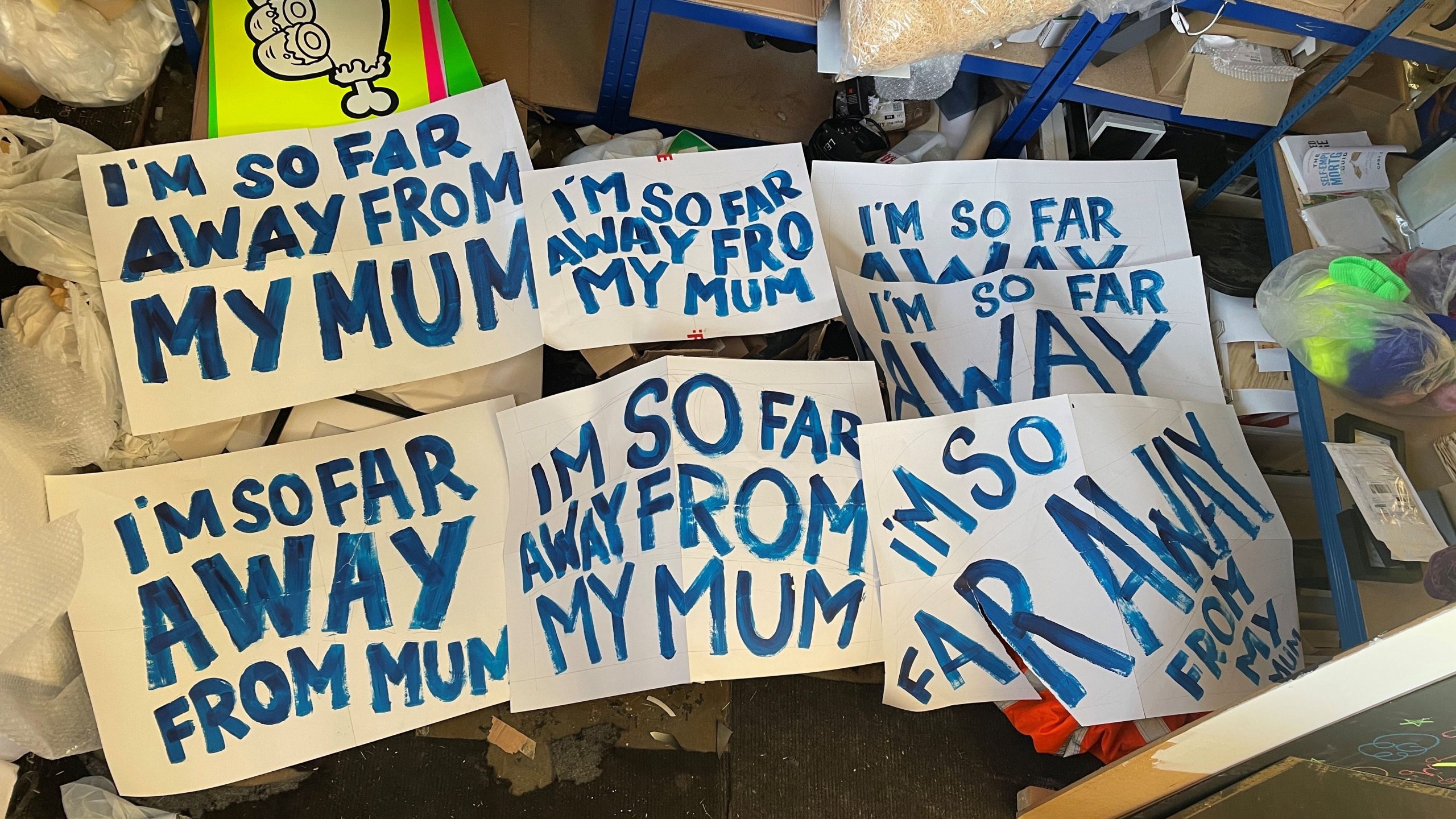
Culture Writer Abbie Fitton reviews Foka Wolf’s art exhibition, Why Are We Stuck in Hospital?, and finds the heart-breaking and disturbing stories to be at the heart of the exhibition, giving each person a voice
Partnering with the Ikon Gallery, the University of Birmingham, and the charity Changing our Lives, Foka Wolf brought the heart-breaking story of people with learning difficulties and/or autism, trapped within long stay hospitals to life. The installation is ongoing in the Ikon until the 19th March, and I would greatly encourage everyone to visit the free experience. Foka Wolf masterfully brought the humanity behind the research done by the University and Changing our Lives into discussion, empowering the voices of individuals who have experienced these hospitals.
At the launch event, we had the privilege of listening to speakers such as Matthew who had been trapped within this system for 16 years before he was finally able to live and work for himself. When knowing of Matthew’s history, it serves to enhance the impact of the installation greatly. The isolation and fear of those trapped was revealed and this left viewers in the shadow of their experience, encouraging me to think about how these institutions function.
The isolation and fear of those trapped was revealed…
When first entering the installation, we were met with a block of facts and statistics surrounding the issue of people with autism or learning difficulties trapped in long stay hospitals. It detailed the 2,000 people who are locked up every year, alongside rows of other facts, and concluded by asking ‘Why are we stuck in a hospital?’. And whilst reading this information the walls that surrounded us were filled with an inescapable maze. The red maze mirrored the feelings of those trapped in hospitals, feeling stuck with no option of getting out, and it portrayed how constricting this lifestyle was.
As I finished taking in the space, the lights suddenly went out. In place of the facts, statistics, and the confining maze wrapped around me, there was dripping neon UV writing crossing messily over the facts, achieved through black lights stationed at the top of each wall. And all that was written was ‘I’m so far away from my mum’. This harrowing quote was confirmed to come from a report of one of the patients, as told by Foka Wolf when I interviewed him prior to the event. Departing from his usual humour, Wolf’s choice of quote and display, coupled with the harsh and sudden appearance of the words, left a lasting impression.
The writing looked as if it was seeping out from behind the facts, running down the walls with its messy handwriting in comparison to the uniformity of the former text. This fulfilled Wolf’s desire to show that behind all these statistics there were real people trapped and that this issue went beyond the number ‘2,000’.
…behind all these statistics there were real people trapped…
In the process as a viewer it felt as though the people in the hospitals were reaching out for help, pushing through these statistics, and reaching for your support, dripping their desire to leave on the walls. The UV ink was present on the surrounding walls as well, this time in singular drops scattered across what before was the maze. Looking like tears, these drops continued to humanise the people beyond just statistics, and shone light on the helplessness felt by those in these situations. From the installation, the isolation and desperation of those felt within these hospitals became apparent. The experience encouraged me to look more into the realities of life for these people, and it was not an experience I could shake off once leaving, it clung to me for days afterwards.
When visiting the installation, I would encourage people to visit the second floor first to understand Matthew’s story. I made the mistake of immediately entering the installation room when the background knowledge to this topic was not at the forefront of my mind. Visiting the second floor first during the next visit I made to the installation was far more impactful. The one criticism I have for the experience was the entrance to the installation did not allow for the isolation I believe it required. The blackout curtain at the entrance meant that outside laughter and chatting could still be heard, taking away from the experience slightly.
Overall, the installation translated the disturbing stories of people like Matthew brilliantly, their voices now at the forefront of incredibly important research into these long stay hospitals. And despite the issue of disturbing noises from outside the space, the installation still managed to maintain an impactful presence in the minds of viewers.
Enjoyed this? Read more Redbrick Culture here!
Comments